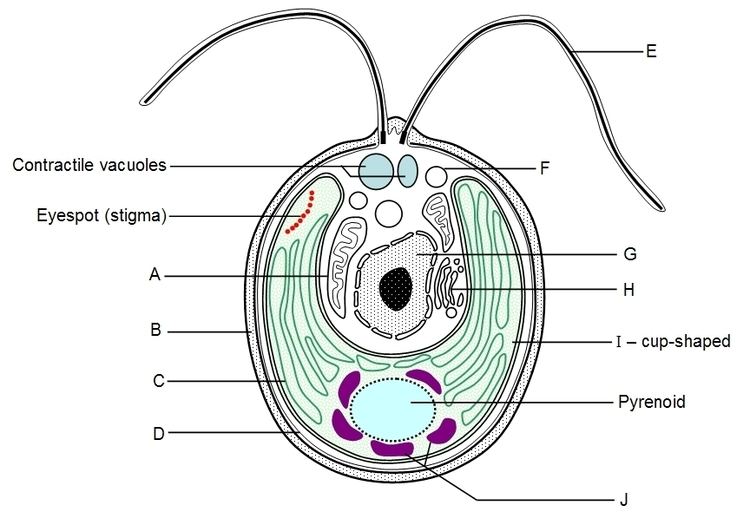Domain Eukaryota Higher classification Chlamydomonadaceae | Kingdom Plantae Order Chlamydomonadales Scientific name Chlamydomonas Rank Genus | |
 | ||
Lower classifications Chlamydomonas reinhardtii, Watermelon snow Similar Neochlorosarcina, Chlamydomonas reinhardtii, Watermelon snow | ||
Chlamydomonas dic microscope
Chlamydomonas is a genus of green algae consisting of unicellular flagellates, found in stagnant water and on damp soil, in freshwater, seawater, and even in snow as "snow algae" Chlamydomonas is used as a model organism for molecular biology, especially studies of flagellar motility and chloroplast dynamics, biogeneses, and genetics. One of the many striking features of Chlamydomonas is that it contains ion channels, (channelrhodopsins), that are directly activated by light. Some regulatory systems of Chlamydomonas are more complex than their homologs in Gymnosperms, with evolutionarily related regulatory proteins being larger and containing additional domains.
Contents
- Chlamydomonas dic microscope
- Chlamydomonas euglena viridis
- Species
- Ecology
- Nutrition
- Morphology
- References

Molecular phylogeny studies indicated that the traditional genus Chlamydomonas defined using morphological data was polyphyletic within Volvocales, and many species were reclassified (e.g., in Oogamochlamys, Lobochlamys), and many other "Chlamydomonas" lineages are to be reclassificated.

Chlamydomonas euglena viridis
Species
Ecology

It is generally found in habitat rich in ammonium salt. Chlamydomonas possesses red eye spots for photosensitivity and reproduces by both asexual and sexual means.
Chlamydomonas's asexual reproduction goes through zoospores, Palmella stage, Aplanospores and Hypnospores; sexual reproduction through isogamy, anisogamy or oogamy.
Nutrition

Most species are obligate phototrophs but C. reinhardtii and C. dysosmos are facultative heterotrophs that can grow in the dark in the presence of acetate as a carbon source.
